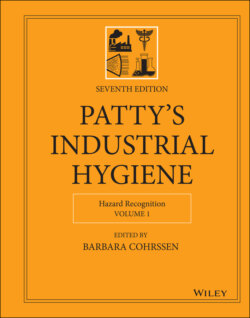Читать книгу Patty's Industrial Hygiene, Hazard Recognition - Группа авторов - Страница 109
2.3 Environmental Analyst
ОглавлениеAnother key EHS professional is the EA. EAs, also called environmental scientists or specialists, examine soil, water, and air as part of a concerted effort to protect, clean, and/or ensure its preservation. Based on their assessment of the hazards and risks that may be present, they often capture this information in written reports and can be called upon to present their findings to workplace management, policymakers, and the general public in order to raise the awareness of potential environmental issues that may be faced by these stakeholders. EAs often work for government agencies to help develop legislation that protects the environment from contamination by hazardous materials and pollutants. Other EAs also work within the private sector to ensure compliance with government regulations. They may help to identify and reduce and/or eliminate sources of pollution and the emission of hazardous substances. This effort can include the responsibilities for ensuring that facilities comply with environmental regulations for air, water, wastewater, hazardous materials, and hazardous waste by providing guidance and support to the facility's staff.
An issue often faced by EAs is that they feel hampered in communicating the risks of the effects of substances on the environment due to the myriad of regulatory requirements that are applicable. The environmental regulations in each of the 50 states in the United States must be as stringent as the federal environmental regulations; however, these regulations can be more stringent than federal regulations and different from those in other states. The same is true for local environmental regulations. EAs must take into consideration the intertwined federal and state regulations, multiple local jurisdictions, as well as internal requirements and sustainability goals. In addition to the risk communication issues that EAs may face in clearly and succinctly unraveling the regulations that may be potentially violated, they may also be hampered by the same type of dilemma faced by IHs and OSs in the workplace. These environmental professionals are often placed in a situation where they need to provide a precautionary advocacy for potentially high hazard issues to an often reluctant and potentially unwilling room of stakeholders. A good risk communication in this situation is to cautiously stoke concern in the audience in the hopes that precautions can be viewed as advantageous, especially if public concern or environmental groups get involved in the process. Alternatively, EAs may be part of an effort to reduce community outrage about factory emissions or groundwater issues that may be perceived as being tied to employees ignoring or mishandling more serious hazards (9).
